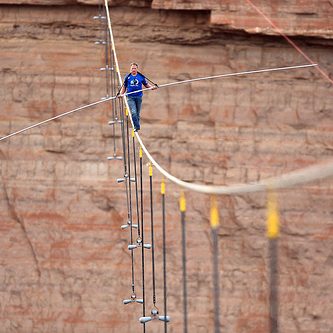Hey! This is new; this is exciting, so why are you so not getting it? What’s up with you? This is going to make your life easier, happier, better…
Does this sound familiar?
Everything goes through change – people, trends, communication, business, etc. However, not everyone wants it to change or believe it is necessary to change and some people clearly don’t like change. Others positively embrace every change without question, like moths to a flame looking for the next bright shiny thing to play with.
Nonetheless, people approach change in similar ways – most people will go through some, all or one of the following reactions:
Denial – Anger – Bargaining – Depression – Acceptance
The five reactions are human reactions and are the same for employees or customers. Tell your employees you are relocating the business and just watch their reactions. Bringing something new to the table causes a powerful surge of emotions. Or a customer may naturally feel irritated or angry when asked to upgrade their perfectly working service.
When you point out the correlation between the Kubler Ross model and the emotions caused by change, most people instantly get it.
When you accept that people will inevitably go through (some, one or all) these stages when dealing with change, it provides the building blocks for making bridges with communication.
One of the key actions is to reach out to people at the earliest possible stage – communicate early and communicate often.
Another factor to consider when preparing those building blocks is the different motivations and personalities who you need to influence; we can roughly divide them into five major categories:
Lemmings / Groupies – Sheep – Champions – Critics – Saboteurs
Imagine leading a group of people across a canyon (a death valley!). Some of them will refuse to go close to the edge, while others will take baby steps, guided by their own curiosity. And some of them, who appear to be indifferent, will only go when they see others do it. Some will argue as to why it is necessary to cross the canyon in the first place and others will bargain about how this side of the canyon has as much to offer as the other side.

Bridging the Canyon
Photo: Alan Levine
The job of the good communicator is to build bridges and then take everyone with them. Having a clearly defined outcome and matching the benefits of those outcomes with each individual is key. That way you can further tailor your messages to make sure the right message is received at the point needed.
What can the small organizations do? One thing is to: prepare, prepare and prepare. When equipped with the knowledge of what to expect, unless a company is prepared with a specific plan, it is headed for the abyss and the outcome they are trying to reach may look to be very far away.
In communication listening is key. Showing, even your critics, that you have heard them is vital, whether or not you can or will action their opinions. It’s how you communicate it that really matters. Large companies set aside very generous budgets for communicating changes, as they know this is the best way to ensure the outcome is reached with the minimum of pain.
In order to fully understand the change cycle we need to dig deep into the he Kubler-Ross Model. Just about every organization can expect one of the following reactions from their employees or customers: indifference, resistance or support.
Let’s go back to those five generalizations we mentioned earlier in the article.

Lemmings/Groupies: Or as we’d like to call them the dangerous cheerleaders. They are so enamored with you or your organization that they’d do everything you ask without questioning it. To the point that when you end up in a dead end it’s hard to do a U-Turn with all the traffic stood behind you.
Then we have the Sheep – they will go along with the plan, they will not question because they do not see the point; they know they will end up in the pen and that the dog won’t stop barking until they are in the pen, so the quicker they get in the pen the better.
The Champions – you need to identify your champions! They will question what you want to achieve, they will challenge you and they will eventually embrace the right outcome and plan. They just want to make sure that what you plan will arrive at the outcome you stated. Champions can be found in any of the other generalizations, identify them, bring them in, set the ground rules, listen to them and equip them with the information they need.
And here come the Critics – the ones who don’t like anything and they talk about what is wrong and how it is going to get even worse. The critics are not so bad really – they are just pessimists and life is grey to them. However, this doesn’t necessarily mean that they can’t be a part of the outcome.
Last, but not least, say “hello” to the Critical Saboteurs. This is a dangerous group – not only will they point out what is wrong, they want to undermine you and cause you harm. The solution? They need to be isolated and removed – surgically; otherwise they will sabotage your business. Now say “goodbye” to them.
How can a business then implement new strategies and models while managing these groups at the same time? A good approach is to focus on the champions. Just like at school, when a new teacher begins their work, they naturally feel better when they make eye contact with a child that seems interested, participates and smiles. A teacher, who gets support from at least one child interested in the subject, manages to adapt to the situation and get the confidence to work successfully with the rest of the class. The champions will influence the middle (and the biggest) group, who’d rather remain indifferent. When the champions influence the middle group, the biggest bridge has been built.

Follow the leader. Photo: Don DeBold
In conclusion – prepare communications that address the five reactions that people are likely to have and time the release carefully.
Identify your champions and work with them.
And once you’re on the other side of the canyon and the outcome has been achieved, celebrate and let everyone share in the success. The next time you want to take them across the valley of death you will probably have more champions who are willing to help build those bridges.


a different valley of death article:
https://www.growingbusiness.co.uk/the-valley-of-death.html
Robert